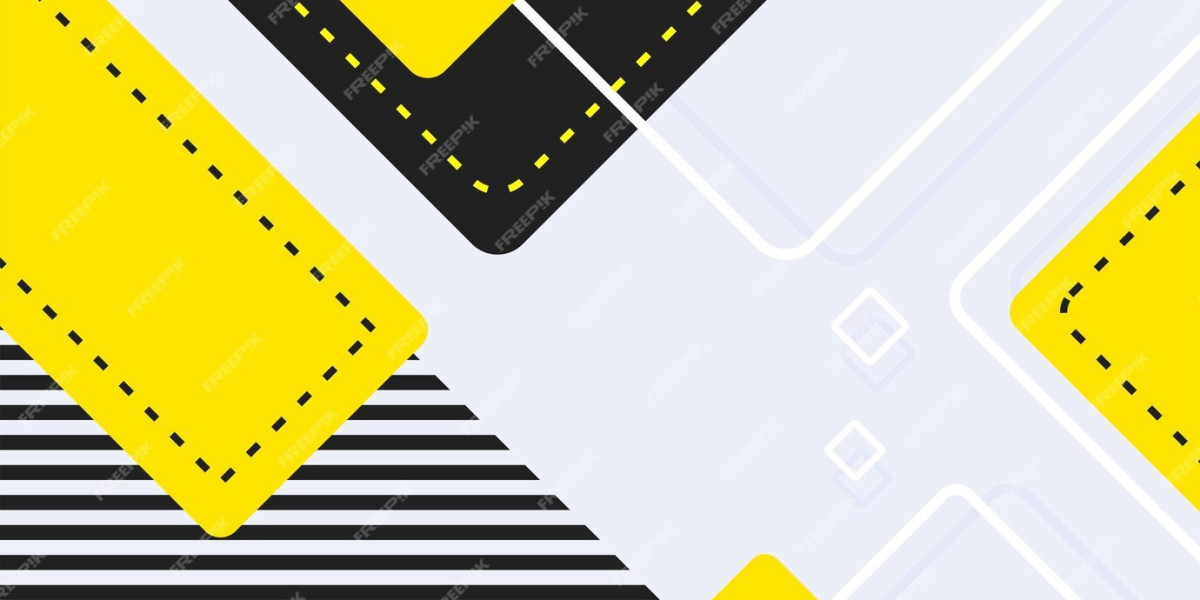
Today, we are thrilled to announce that DeepSeek R1 distilled Llama and Qwen designs are available through Amazon Bedrock Marketplace and Amazon SageMaker JumpStart. With this launch, you can now deploy DeepSeek AI's first-generation frontier model, DeepSeek-R1, along with the distilled versions ranging from 1.5 to 70 billion criteria to develop, experiment, and properly scale your generative AI ideas on AWS.

In this post, we show how to get started with DeepSeek-R1 on Amazon Bedrock Marketplace and SageMaker JumpStart. You can follow comparable actions to deploy the distilled variations of the designs also.

Overview of DeepSeek-R1
DeepSeek-R1 is a large language model (LLM) developed by DeepSeek AI that uses support discovering to boost thinking abilities through a multi-stage training procedure from a DeepSeek-V3-Base structure. A key differentiating function is its reinforcement knowing (RL) step, which was used to refine the design's reactions beyond the basic pre-training and tweak procedure. By integrating RL, DeepSeek-R1 can adapt better to user feedback and goals, ultimately boosting both relevance and clarity. In addition, DeepSeek-R1 utilizes a chain-of-thought (CoT) approach, implying it's geared up to break down complicated inquiries and reason through them in a detailed manner. This directed reasoning procedure enables the model to produce more precise, transparent, and detailed responses. This model combines RL-based fine-tuning with CoT capabilities, aiming to create structured reactions while concentrating on interpretability and user interaction. With its comprehensive capabilities DeepSeek-R1 has captured the industry's attention as a versatile text-generation model that can be integrated into numerous workflows such as representatives, rational reasoning and information interpretation jobs.
DeepSeek-R1 utilizes a Mix of Experts (MoE) architecture and is 671 billion specifications in size. The MoE architecture permits activation of 37 billion parameters, allowing efficient inference by routing questions to the most relevant specialist "clusters." This technique permits the design to focus on various issue domains while maintaining overall performance. DeepSeek-R1 requires at least 800 GB of HBM memory in FP8 format for reasoning. In this post, we will use an ml.p5e.48 xlarge circumstances to deploy the model. ml.p5e.48 xlarge comes with 8 Nvidia H200 GPUs supplying 1128 GB of GPU memory.
DeepSeek-R1 distilled designs bring the reasoning abilities of the main R1 design to more effective architectures based upon popular open models like Qwen (1.5 B, 7B, 14B, and 32B) and Llama (8B and 70B). Distillation describes a process of training smaller sized, more efficient designs to mimic the habits and thinking patterns of the larger DeepSeek-R1 model, utilizing it as a teacher model.
You can release DeepSeek-R1 model either through SageMaker JumpStart or Bedrock Marketplace. Because DeepSeek-R1 is an emerging design, we recommend releasing this design with guardrails in location. In this blog site, we will utilize Amazon Bedrock Guardrails to introduce safeguards, prevent hazardous material, and evaluate models against key safety requirements. At the time of composing this blog site, for DeepSeek-R1 implementations on SageMaker JumpStart and Bedrock Marketplace, Bedrock Guardrails supports only the ApplyGuardrail API. You can produce multiple guardrails tailored to various use cases and apply them to the DeepSeek-R1 model, improving user experiences and standardizing safety controls throughout your generative AI applications.
Prerequisites
To deploy the DeepSeek-R1 design, you require access to an ml.p5e circumstances. To examine if you have quotas for P5e, open the Service Quotas console and under AWS Services, select Amazon SageMaker, and verify you're using ml.p5e.48 xlarge for endpoint usage. Make certain that you have at least one ml.P5e.48 xlarge circumstances in the AWS Region you are deploying. To ask for a limitation increase, develop a limit boost request and connect to your account team.
Because you will be releasing this design with Amazon Bedrock Guardrails, make certain you have the correct AWS Identity and Gain Access To Management (IAM) permissions to utilize Amazon Bedrock Guardrails. For guidelines, see Set up consents to utilize guardrails for material filtering.
Implementing guardrails with the ApplyGuardrail API
Amazon Bedrock Guardrails permits you to present safeguards, prevent harmful material, and evaluate designs against essential security requirements. You can implement precaution for the DeepSeek-R1 model utilizing the Amazon Bedrock ApplyGuardrail API. This allows you to apply guardrails to examine user inputs and model actions deployed on Amazon Bedrock Marketplace and SageMaker JumpStart. You can develop a guardrail using the Amazon Bedrock console or the API. For the example code to develop the guardrail, see the GitHub repo.
The basic circulation involves the following actions: First, the system gets an input for the design. This input is then processed through the ApplyGuardrail API. If the input passes the guardrail check, it's sent to the model for reasoning. After receiving the model's output, another guardrail check is used. If the output passes this last check, it's returned as the final result. However, if either the input or output is intervened by the guardrail, a message is returned showing the nature of the intervention and whether it took place at the input or output stage. The examples showcased in the following sections show inference utilizing this API.
Deploy DeepSeek-R1 in Amazon Bedrock Marketplace
Amazon Bedrock Marketplace offers you access to over 100 popular, emerging, and specialized structure models (FMs) through Amazon Bedrock. To gain access to DeepSeek-R1 in Amazon Bedrock, total the following actions:
1. On the Amazon Bedrock console, pick Model brochure under Foundation designs in the navigation pane.
At the time of composing this post, you can use the InvokeModel API to conjure up the model. It doesn't support Converse APIs and other Amazon Bedrock tooling.
2. Filter for DeepSeek as a provider and choose the DeepSeek-R1 model.
The design detail page offers vital details about the design's abilities, pipewiki.org pricing structure, and application standards. You can find detailed use directions, including sample API calls and code bits for integration. The design supports different text generation jobs, consisting of content production, code generation, and concern answering, utilizing its reinforcement learning optimization and CoT reasoning capabilities.
The page also consists of implementation choices and licensing details to help you get begun with DeepSeek-R1 in your applications.
3. To begin utilizing DeepSeek-R1, choose Deploy.
You will be prompted to set up the release details for DeepSeek-R1. The model ID will be pre-populated.
4. For Endpoint name, get in an endpoint name (between 1-50 alphanumeric characters).
5. For engel-und-waisen.de Number of circumstances, go into a variety of instances (in between 1-100).
6. For example type, select your instance type. For optimal efficiency with DeepSeek-R1, a GPU-based instance type like ml.p5e.48 xlarge is suggested.
Optionally, you can set up sophisticated security and infrastructure settings, consisting of virtual private cloud (VPC) networking, service function permissions, and encryption settings. For the majority of utilize cases, the default settings will work well. However, for production deployments, you might want to examine these settings to line up with your organization's security and compliance requirements.
7. Choose Deploy to begin utilizing the design.
When the deployment is total, you can check DeepSeek-R1's abilities straight in the Amazon Bedrock play ground.
8. Choose Open in playground to access an interactive interface where you can try out different triggers and change model specifications like temperature and optimum length.
When utilizing R1 with Bedrock's InvokeModel and Playground Console, utilize DeepSeek's chat design template for ideal outcomes. For example, <|begin▁of▁sentence|><|User|>content for inference<|Assistant|>.
This is an outstanding way to explore the model's reasoning and text generation capabilities before integrating it into your applications. The play ground supplies instant feedback, helping you understand how the design reacts to various inputs and engel-und-waisen.de letting you tweak your triggers for ideal outcomes.
You can quickly test the model in the playground through the UI. However, to conjure up the deployed model programmatically with any Amazon Bedrock APIs, fishtanklive.wiki you need to get the endpoint ARN.
Run inference using guardrails with the released DeepSeek-R1 endpoint
The following code example shows how to carry out reasoning using a deployed DeepSeek-R1 design through Amazon Bedrock utilizing the invoke_model and ApplyGuardrail API. You can develop a guardrail utilizing the Amazon Bedrock console or the API. For the example code to produce the guardrail, see the GitHub repo. After you have produced the guardrail, use the following code to execute guardrails. The script initializes the bedrock_runtime client, sets up reasoning specifications, and sends out a request to produce text based on a user timely.
Deploy DeepSeek-R1 with SageMaker JumpStart
SageMaker JumpStart is an artificial intelligence (ML) center with FMs, integrated algorithms, and prebuilt ML services that you can deploy with just a couple of clicks. With SageMaker JumpStart, you can tailor pre-trained designs to your use case, with your information, and release them into production using either the UI or SDK.
Deploying DeepSeek-R1 design through SageMaker JumpStart uses 2 convenient techniques: utilizing the user-friendly SageMaker JumpStart UI or executing programmatically through the SageMaker Python SDK. Let's check out both methods to assist you choose the technique that best suits your requirements.
Deploy DeepSeek-R1 through SageMaker JumpStart UI
Complete the following steps to deploy DeepSeek-R1 using SageMaker JumpStart:
1. On the SageMaker console, choose Studio in the navigation pane.
2. First-time users will be prompted to create a domain.
3. On the SageMaker Studio console, pick JumpStart in the navigation pane.
The model web browser shows available models, with details like the service provider name and design abilities.
4. Look for DeepSeek-R1 to see the DeepSeek-R1 model card.
Each model card reveals crucial details, consisting of:
- Model name
- Provider name
- Task classification (for instance, Text Generation).
Bedrock Ready badge (if applicable), suggesting that this design can be signed up with Amazon Bedrock, permitting you to use Amazon Bedrock APIs to conjure up the design
5. Choose the design card to view the model details page.
The model details page consists of the following details:
- The design name and company details.
Deploy button to deploy the design.
About and Notebooks tabs with detailed details
The About tab consists of important details, such as:
- Model description.
- License details.
- Technical specs.
- Usage guidelines
Before you deploy the model, it's suggested to evaluate the model details and license terms to verify compatibility with your use case.
6. Choose Deploy to proceed with release.
7. For Endpoint name, use the instantly created name or develop a custom one.
8. For example type ¸ choose a circumstances type (default: ml.p5e.48 xlarge).
9. For Initial circumstances count, get in the number of instances (default: 1).
Selecting proper instance types and counts is important for expense and efficiency optimization. Monitor your implementation to change these settings as needed.Under Inference type, Real-time reasoning is selected by default. This is enhanced for sustained traffic and archmageriseswiki.com low latency.
10. Review all configurations for precision. For this model, we strongly recommend sticking to SageMaker JumpStart default settings and making certain that network seclusion remains in location.
11. Choose Deploy to deploy the model.
The release procedure can take numerous minutes to finish.
When implementation is complete, your endpoint status will change to InService. At this moment, the design is ready to accept inference demands through the endpoint. You can keep track of the release progress on the SageMaker console Endpoints page, which will display relevant metrics and status details. When the deployment is complete, you can invoke the model utilizing a SageMaker runtime client and integrate it with your applications.
Deploy DeepSeek-R1 using the SageMaker Python SDK
To get begun with DeepSeek-R1 using the SageMaker Python SDK, you will require to install the SageMaker Python SDK and make certain you have the essential AWS permissions and environment setup. The following is a detailed code example that demonstrates how to release and utilize DeepSeek-R1 for inference programmatically. The code for deploying the design is provided in the Github here. You can clone the note pad and run from SageMaker Studio.
You can run extra demands against the predictor:
Implement guardrails and run reasoning with your SageMaker JumpStart predictor
Similar to Amazon Bedrock, you can also use the ApplyGuardrail API with your SageMaker JumpStart predictor. You can create a guardrail utilizing the Amazon Bedrock console or the API, and execute it as displayed in the following code:
Tidy up
To prevent unwanted charges, finish the steps in this section to clean up your resources.
Delete the Amazon Bedrock Marketplace release
If you deployed the model using Amazon Bedrock Marketplace, higgledy-piggledy.xyz total the following actions:
1. On the Amazon Bedrock console, under Foundation designs in the navigation pane, select Marketplace implementations.
2. In the Managed releases section, locate the endpoint you desire to erase.
3. Select the endpoint, and on the Actions menu, select Delete.
4. Verify the endpoint details to make certain you're deleting the appropriate release: 1. Endpoint name.
2. Model name.
3. Endpoint status
Delete the SageMaker JumpStart predictor
The SageMaker JumpStart model you released will sustain expenses if you leave it running. Use the following code to erase the endpoint if you want to stop sustaining charges. For more details, see Delete Endpoints and Resources.
Conclusion
In this post, we explored how you can access and deploy the DeepSeek-R1 design utilizing Bedrock Marketplace and SageMaker JumpStart. Visit SageMaker JumpStart in SageMaker Studio or Amazon Bedrock Marketplace now to get going. For more details, refer to Use Amazon Bedrock tooling with Amazon SageMaker JumpStart models, SageMaker JumpStart pretrained designs, Amazon SageMaker JumpStart Foundation Models, Amazon Bedrock Marketplace, and Getting going with Amazon SageMaker JumpStart.
About the Authors
Vivek Gangasani is a Lead Specialist Solutions Architect for Inference at AWS. He assists emerging generative AI companies build innovative services utilizing AWS services and accelerated calculate. Currently, he is concentrated on establishing strategies for fine-tuning and optimizing the reasoning efficiency of big language models. In his totally free time, Vivek delights in hiking, enjoying movies, and trying various cuisines.
Niithiyn Vijeaswaran is a Generative AI Specialist Solutions Architect with the Third-Party Model Science group at AWS. His area of focus is AWS AI accelerators (AWS Neuron). He holds a Bachelor's degree in Computer Science and Bioinformatics.
Jonathan Evans is a Specialist Solutions Architect dealing with generative AI with the Third-Party Model Science team at AWS.
Banu Nagasundaram leads item, engineering, and tactical collaborations for Amazon SageMaker JumpStart, SageMaker's artificial intelligence and generative AI center. She is passionate about building options that assist consumers accelerate their AI journey and unlock company worth.








